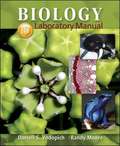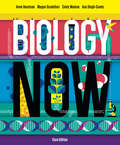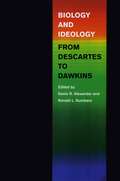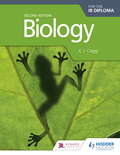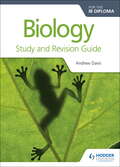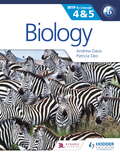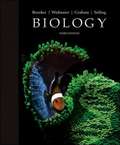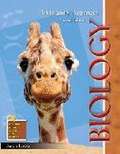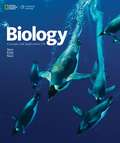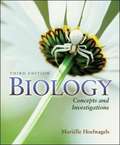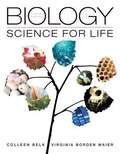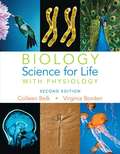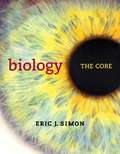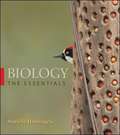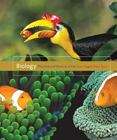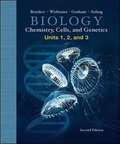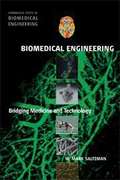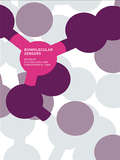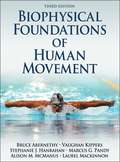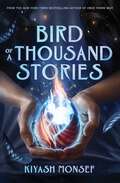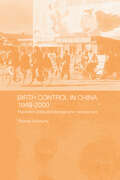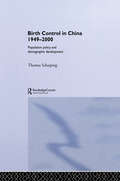- Table View
- List View
Biology Laboratory Manual (Tenth Edition)
by Randy Moore Darrell VodopichThe Biology Laboratory Manual by Vodopich and Moore was designed for an introductory biology course with a broad survey of basic laboratory techniques. The experiments and procedures are simple, safe, easy to perform, and especially appropriate for large classes. Few experiments require more than one class meeting to complete the procedure. Each exercise includes many photographs, traditional topics, and experiments that help students learn about life. Procedures within each exercise are numerous and discrete so that an exercise can be tailored to the needs of the students, the style of the instructor, and the facilities available.
Biology Now
by Anu Singh-Cundy Anne Houtman Megan Scudellari Cindy MaloneA balance of science and story, with a focus on the people doing biology now.Written by a science journalist and teachers with over thirty years experience in the classroom, Biology Now skillfully blends core biology concepts with popular science stories of real people doing science today. These stories capture the human face of biology, highlighting the work of researchers and medical professionals who are making new discoveries every day. The text is accompanied by a wealth of carefully crafted pedagogy that teaches students how to analyze science in the news, interpret data, ask questions, and distinguish between science and pseudoscience.
Biology and Ideology from Descartes to Dawkins
by Ronald L. Numbers Denis R. AlexanderUntil well into the twentieth century neither scientists themselves nor the scholars who studied science linked science with ideology, a term coined in the late eighteenth century and typically employed pejoratively to designate ideas in the use of particular interests. Among the first to connect ideology and science were Karl Marx and his followers, who identified "ideologies" as ideas that served the social interests of the bourgeoisie.
Biology for the IB Diploma Second Edition
by Andrew Davis C. J. CleggProvide clear guidance to the 2014 changes and ensure in-depth study with accessible content, directly mapped to the new syllabus and approach to learning.This second edition of the highly regarded textbook contains all SL and HL content, which is clearly identified throughout. Options are available free online, along with appendices and data and statistics.- Improve exam performance, with exam-style questions, including from past papers- Integrate Theory of Knowledge into your lessons and provide opportunities for cross-curriculum study- Stretch more able students with extension activities- The shift to concept-based approach to learning , Nature of Science, is covered by providing a framework for the course with points for discussion - Key skills and experiments included
Biology for the IB Diploma Study and Revision Guide
by Andrew Davis C. J. CleggStretch your students to achieve their best grade with these year round course companions; providing clear and concise explanations of all syllabus requirements and topics, and practice questions to support and strengthen learning. - Consolidate revision and support learning with a range of exam practice questions and concise and accessible revision notes- Practise exam technique with tips and trusted guidance from examiners on how to tackle questions- Focus revision with key terms and definitions listed for each topic/sub topic
Biology for the IB MYP 4 & 5: By Concept
by Andrew Davis Patricia DeoEndorsed by the IBDrive meaningful inquiry through a unique concept-driven narrative.- Supports every aspect of assessment with opportunities that use the criteria- Gives you easy ways to differentiate and extend learning- Provides a meaningful approach by integrating the inquiry statement in a global context- Develops critical-thinking skills with activities and summative sections rooted in the ATL frameworkThis title is also available in two digital formats via Dynamic Learning. Find out more by clicking on the links at the top of the page.
Biology, 3rd Edition
by Robert J. Brooker Linda Graham Peter Stiling Eric WidmaierThe first and second editions of BIOLOGY, written by Dr. Rob Brooker, Dr. Eric Widmaier, Dr. Linda Graham, and Dr. Peter Stiling, has reached thousands of students and provided them with an outstanding view of the biological world. Now, the third edition has gotten even better! The author team is dedicated to producing the most engaging and current text that is available for undergraduate students who are majoring in biology. The authors want students to be inspired by the field of biology and become critical thinkers. They understand the goal of a professor is to prepare students for future course work, lab experiences, and careers in the sciences. Building on the successes of the first and second editions, the third edition reflects a focus on core competencies and provides a more learner-centered approach. The strength of an engaging and current text is improved with the addition of new pedagogical features that direct the students' learning goals and provide opportunities for assessment, to determine if students understand the concepts.
Biology: Concepts And Applications
by Cecie Starr Lisa Starr Christine A. EversIn the new edition of BIOLOGY: CONCEPTS AND APPLICATIONS, authors Cecie Starr, Christine A. Evers, and Lisa Starr have partnered with the National Geographic Society to develop a text designed to engage and inspire. This trendsetting text introduces the key concepts of biology to non-biology majors using clear explanations and unparalleled visuals. While mastering core concepts, each chapter challenges students to question what they read and apply the concepts learned, providing students with the critical thinking skills and science knowledge they need in life. Renowned for its writing style the new edition is enhanced with exclusive content from the National Geographic Society, including over 200 new photos and illustrations. New People Matter sections in most chapters profile National Geographic Explorers and Grantees who are making significant contributions in their field, showing students how concepts in the chapter are being applied in biological research. Each chapter concludes with an 'Application' section highlighting real-world uses of biology and helping students make connections to chapter content.
Biology: Concepts and Investigations 3rd Edition
by Mariëlle HoefnagelsMariëlle Hoefnagels' passion as a classroom instructor is evident in Biology: Concepts and Investigations, an introductory biology textbook written to explain the general concepts of biology at a level of detail that allows students to understand concepts rather than memorise details. New media integration icons, upgraded PowerPoint presentations, new tutorial animations based on textbook art, upgraded Connect question banks, and adaptive technologies like LearnSmart and Smartbook capitalise on the power of technology to enhance student understanding. Key goals of the book are to: help the student connect the concepts in the book to their everyday lives; show connections between ideas within the chapter and to material they have already studied; teach introductory students how to be more active learners.
Biology: Science for Life
by Colleen Belk Virginia Borden MaierColleen Belk and Virginia Borden Maier have helped students understand biology for more than twenty years in the classroom and over ten years with their popular text, Biology: Science for Life. The thoroughly revised Fifth Edition engages students with new storylines that explore high-interest topics such as binge drinking, pseudoscience, and study drugs.
Biology: Science for Life with Physiology
by Colleen Belk Virginia BordenThe author's experiences of the sciences life such as: Cells, metabolism, and life in the genetics.
Biology: Student Study Guide (Ninth Edition)
by Sylvia S. MaderThe Study Guide is designed to accompany your text, Biology, ninth edition, by Sylvia S. Mader. A number of different approaches are used to help you achieve mastery of the chapter concepts.
Biology: The Core
by Eric J. SimonEric Simon’s Biology: The Core combines a 12-chapter textbook and robust content in Mastering Biology to offer a flexible new teaching and learning package that engages you with concise writing, beautiful and effective visuals, and outstanding interactive digital resources.
Biology: The Essentials
by Mariëlle HoefnagelsHOEFNAGELS: BIOLOGY: THE ESSENTIALS Mariëlle Hoefnagels presents up-to-date information using a scientific approach and relevant examples to illustrate the basic biological concepts. Mariëlle's focus on evolutionary processes and implications aid a cross-disciplinary approach to the study of Biology, which will help students make connections and grasp the importance and relevance of biology in their lives. BIOLOGY EXPLAINED YOUR WAY - In writing this book Mariëlle has maintained a TOTAL FOCUS ON THE STUDENT and what they need to be successful in this course by providing the tools and direction needed to support understanding and learning, not memorizing. Her primary goal has been to simplify the more complicated biological content to the elements that students need to actually understand it. WANT TO DELIVER AN ESSENTIAL OVERVIEW? The early sections of the chapters serve as an overview that introduces the importance and overall result of the process but skips the detail.
Biology: The Unity and Diversity of Life
by Cecie Starr Lisa Starr Ralph Taggart Christine EversWritten by a team of best-selling authors, BIOLOGY: THE UNITY AND DIVERSITY OF LIFE, 14th Edition reveals the biological world in wondrous detail. This text shows and tells the fascinating story of life on Earth, and engages readers with hands-on activities that encourage critical thinking. Chapter opening Learning Roadmaps help students focus on the topics that matter most and section-ending "Take Home Messages" reinforce key concepts. Helpful in-text features include a running glossary, case studies, issue-related essays, linked concepts, self-test questions, data analysis problems, and more. BIOLOGY: THE UNITY AND DIVERSITY OF LIFE, 14th Edition puts the living world of biology under a microscope for readers from all walks of life to analyze, understand, and enjoy!
Biology: The Unity and Diversity of Life (12th edition)
by Cecie Starr Lisa Starr Ralph Taggart Christine EversThe 12th edition of this undergraduate text seeks to make students aware of the connection between molecular change, evolution, and students' own lives. To achieve this goal, the text features essays on current controversial issues, links to concepts within and between chapters, two-page concept spreads, and problem solving examples and experiments that encourage students to think critically. Other changes include reorganized and rewritten material on areas such as energy flow and stem cell research. Author information is not given.
Biology: Units 1,2, and 3
by Eric P. Widmaier Robert J. Brooker Linda Graham Peter StilingThis Volume of Biology covers Chemistry, Cell Biology, and Genetics. The Brooker et. al text features an evolutionary focus with an emphasis on scientific inquiry.
Biomedical Engineering for Global Health
by Rebecca Richards-KortumCan technology and innovation transform world health? Connecting undergraduate students with global problems, Rebecca Richard-Kortum examines the interplay between biomedical technology design and the medical, regulatory, economic, social and ethical issues surrounding global health. Driven by case studies, including cancer screening, imaging technologies, implantable devices and vaccines, students learn how the complexities and variation across the globe affect the design of devices and therapies. A wealth of learning features, including classroom activities, project assignments, homework problems and weblinks within the book and online, provide a full teaching package. For visionary general science and biomedical engineering courses, this book will inspire students to engage in solving global issues that face us all.
Biomedical Engineering: Bridging Medicine and Technology
by W. Mark SaltzmanThis book is an introduction to biomedical engineering, starting from the basics and demonstrating the engineering principles that are used to create new diagnostic methods and therapies for human disease. Although biomedical engineering is a relatively new field of study, it will impact almost every person in the world.
Biomolecular Sensors
by Christopher R. Lowe Electra GizeliThe development of devices that incorporate biological assemblies is impacting analytical and biomedical research. Today, scientists can monitor vital biological interactions-such as the binding of DNA to proteins-in real time, deriving unique information necessary to understanding biochemical pathways and thus aiding the design of drugs to regulat
Biophysical Foundations of Human Movement (3rd Edition)
by Bruce Abernethy Vaughan Kippers Stephanie Hanrahan Marcus Pandy Ali Mcmanus Laurel Mackinnon"Biophysical Foundations of Human Movement, Third Edition," introduces readers to key concepts concerning the anatomical, mechanical, physiological, neural, and psychological bases of human movement. The text provides undergraduate students with a broad foundation for more detailed study of the subdisciplines of human movement and for cross-disciplinary studies. Readers will learn the multi-dimensional changes in movement and movement potential that occur throughout the life span as well as those changes that occur as adaptations to training, practice, and other lifestyle factors. This third edition includes the latest research and improved presentation to address areas of growth and change in the fields of human movement. The following are important updates to this edition: - A new chapter on historical origins of human movement science provides students with an appreciation of the development of the field as well as its future directions. - Content regarding exercise physiology has been reorganized to provide more discrete coverage of key concepts in nutrition. - A new concluding section focuses on applications in the areas of prevention and management of chronic disease, prevention and management of injury, and performance enhancement in sport and the workplace, as well as the benefits of sport and exercise science to work, sport, and everyday living. - Ancillary materials support instructors in teaching across disciplines as they assist students in understanding the breadth of content in this comprehensive text. Using a modular approach to teaching sport and exercise science, "Biophysical Foundations of Human Movement, Third Edition," offers students a structured understanding of how the subdisciplines work independently and in tandem. Following a general introduction to the field of human movement studies, readers are introduced to basic concepts, life-span changes, and adaptations arising in response to training in each of the five major biophysical subdisciplines of human movement. Each subdiscipline is given a brief introduction, including the definition and historical development of the subdiscipline, the typical issues and problems it addresses, the levels of analysis it uses, and relevant professional training and organizations. Multi-disciplinary and cross-disciplinary approaches to human movement are also discussed along with contemporary applications. By studying the integration of knowledge from a number of the biophysical subdisciplines, students will be better prepared for advanced study and careers reliant on the integration of knowledge from various disciplines and perspectives. The third edition offers tools for retaining the material, including learning objectives and summaries in each chapter, a glossary, and lists of web-based resources. Throughout the text, special "In Focus" features highlight key organizations, individuals, and studies from around the world that have contributed to the current understanding of human movement. These features help readers appreciate the evolution of the field so that they may better understand its direction. Students interested in further study will find specialized texts for each of the subdisciplines listed in the Further Reading and References section of each chapter along with updated lists of websites. The third edition of "Biophysical Foundations of Human Movement" offers a comprehensive introduction for students, scientists, and practitioners involved in the many professions grounded in or related to human movement, kinesiology, and sport and exercise science. By considering the effect of adaptations in each of the biophysical subdisciplines of human movement, "Biophysical Foundations of Human Movement" also illustrates the important role physical activity plays in the maintenance of health throughout the life span.
Bird of a Thousand Stories (Once There Was)
by Kiyash MonsefIn this transporting and suspenseful companion to the New York Times bestselling Once There Was that&’s perfect for fans of Impossible Creatures, Marjan travels around the globe in search of a mythical bird in terrible danger, whose fate could determine the future of the world. Marjan Dastani is successfully leading a double life. Only a few people know that when she&’s not in school, she travels the world taking care of mythical beasts, sent on missions by a shadowy organization known as The Fells. In an adventure that takes her across continents and connects her with the wildest of mythic beasts around the globe, Marjan must track down the fabled Bird of a Thousand Stories before someone with more nefarious plans finds it. But the more closely she connects with the world&’s mythical creatures, the more danger she&’s in of losing her friendships—and all that tethers her to the life she&’s known.
Birth Control in China 1949-2000: Population Policy and Demographic Development (Chinese Worlds)
by Thomas ScharpingThis comprehensive volume analyzes Chinese birth policies and population developments from the founding of the People's Republic to the 2000 census. The main emphasis is on China's 'Hardship Number One Under Heaven': the highly controversial one-child campaign, and the violent clash between family strategies and government policies it entails.Birth Control in China 1949-2000 documents an agonizing search for a way out of predicament and a protracted inner Party struggle, a massive effort for social engineering and grinding problems of implementation. It reveals how birth control in China is shaped by political, economic and social interests, bureaucratic structures and financial concerns. Based on own interviews and a wealth of new statistics, surveys and documents, Thomas Scharping also analyzes how the demographics of China have changed due to birth control policies, and what the future is likely to hold. This book will be of interest to students and scholars of modern China, Asian studies and the social sciences.
Birth Control in China 1949-2000: Population Policy and Demographic Development (Chinese Worlds)
by Thomas ScharpingThis comprehensive volume analyses Chinese birth policies and population developments from the founding of the People's Republic to the 2000 census. The main emphasis is on China's 'Hardship Number One Under Heaven': the highly controversial one-child campaign, and the violent clash between family strategies and government policies it entails.Birth Control in China 1949-2000 documents an agonizing search for a way out of predicament and a protracted inner Party struggle, a massive effort for social engineering and grinding problems of implementation. It reveals how birth control in China is shaped by political, economic and social interests, bureaucratic structures and financial concerns. Based on own interviews and a wealth of new statistics, surveys and documents, Thomas Scharping also analyses how the demographics of China have changed due to birth control policies, and what the future is likely to hold. This book will be of interest to students and scholars of Modern China, Asian studies and the social sciences.
